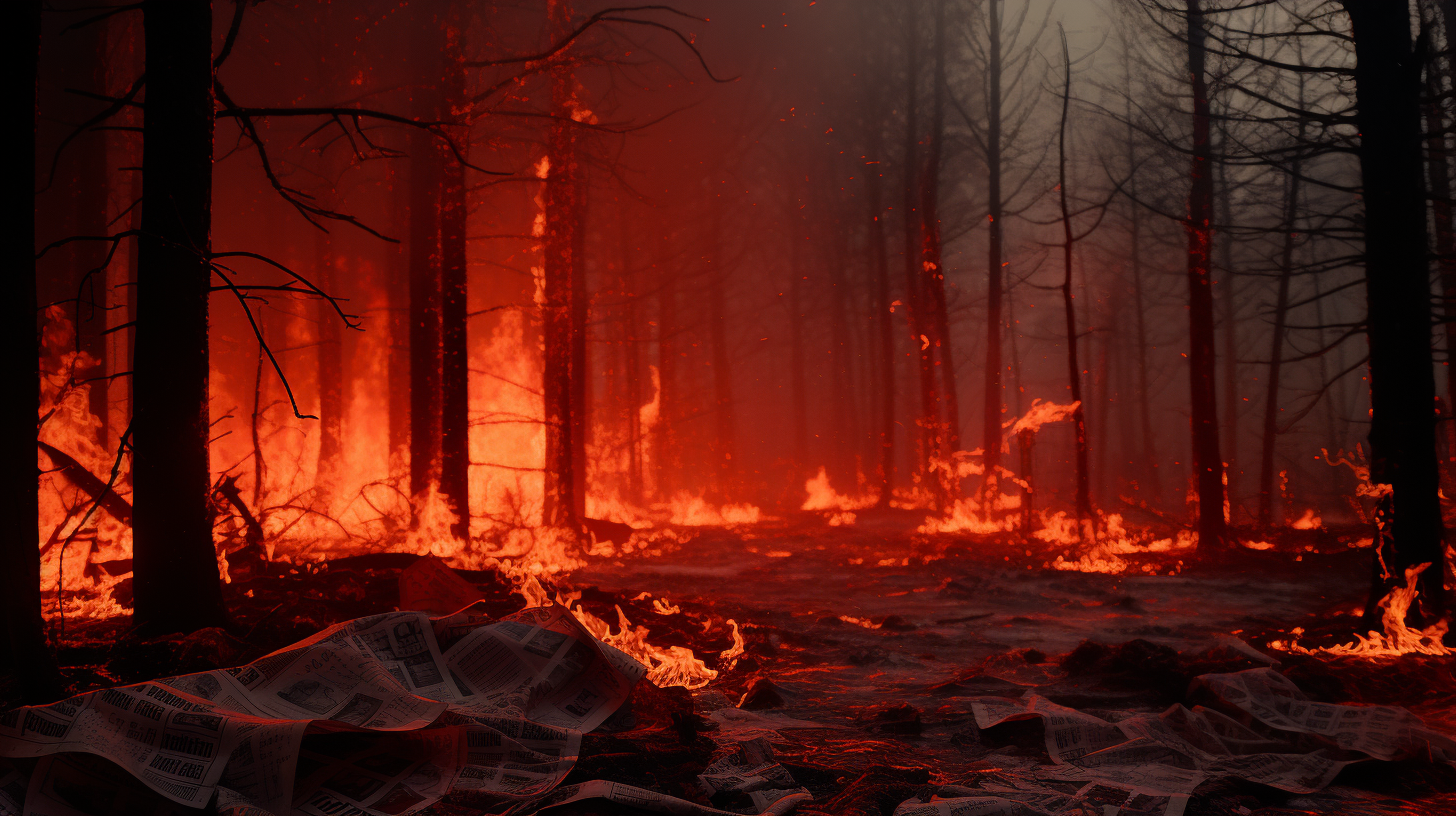Against a backdrop of an ever-darkening sky, a crimson veil falls upon the Earth. Once symbols of life and vitality, forests stand now as mere candlesticks, alight with the flames of their own destruction. In this morose reality, humanity stares, wide-eyed, as the new red canopies stretch across what once was a vibrant, green blanket covering the terrains of our home.
As we forge deeper into this dystopian present, we come face to face with the vigor of wildfires that feed without rest on everything that dares to grow from the soil. The incessant crackle and the searing heat bear witness to a world engulfed by flames, a bizarre, fiery spectacle that drowns out the cries for help from our feeble, suffocating planet.
‘Is this the world we have wrought?‘, asks a rhetorical voice lost somewhere amid the chaos. Biodiversity has not only receded—it’s vanishing like mist at daybreak, surreptitiously, leaving barrenness in its wake. Habitats, homes, histories, all swallowed by the unquenchable firestorm that shows no mercy, revealing in its path the exposed and scarred flesh of the Earth.
In the face of these ecological crematoriums, humanity’s efforts may seem but whispers against a tempest. Yet, there are those who stand, hose in hand, against the roaring infernos, who brave the heat to plant new life where only ashes remain. This valor, however poignant, feels akin to an elegy—a somber tune played at the funeral of nature itself. The orchestrated efforts to mitigate and impart knowledge about fireproofing our environment become a curious exercise in futility, for as we patch one wound, another opens fiercely elsewhere.
The imagery of seared canopies extends beyond the literal flames, alighting the figurative torches of awareness in hearts and minds. Yet, questions persist. ‘Where were the stewards of the land before the first spark took flight?’ ‘How could the caretakers have let their precious charges succumb to such a fate?’ The soil beneath us is rich with the ashes of our decisions, a stark reminder of the power of our collective action—or inaction.
With hopelessness as pervasive as the smoke in the skies, some turn to innovation as a potential beacon. Yet, as we marvel at our own cleverness, nature, debilitated and scorched, scarcely clings to a semblance of its former self. For every sapling rising defiantly towards the sun, a hundred trees are lost to the deafening silence that follows a forest’s last breath.
An irreversible tipping point looms ahead, with current trajectories promising not but a world of endless red—an autumn eternal, not of leaves, but of embers. The golden hues of harvest and the soft greens of spring give way to the permanent flare of nature’s pyre. This vivid tapestry—so mesmerizing, so terminal—hangs above our heads, a memento mori of what we stand to lose not tomorrow, but today.
As we watch through windows which frame the apocalyptic tableaux beyond our reach, it is not too late to ponder the legacy we bestow upon the generations who will inherit nothing but stories of green forests and blue skies. The new red canopies, however, will be their only shade, offering no respite, no solace—only the warmth of an ever-burning world. The final chapter of this ecological saga is yet to be writ, but the quill is heavy, the ink, a deep, ominous red.
